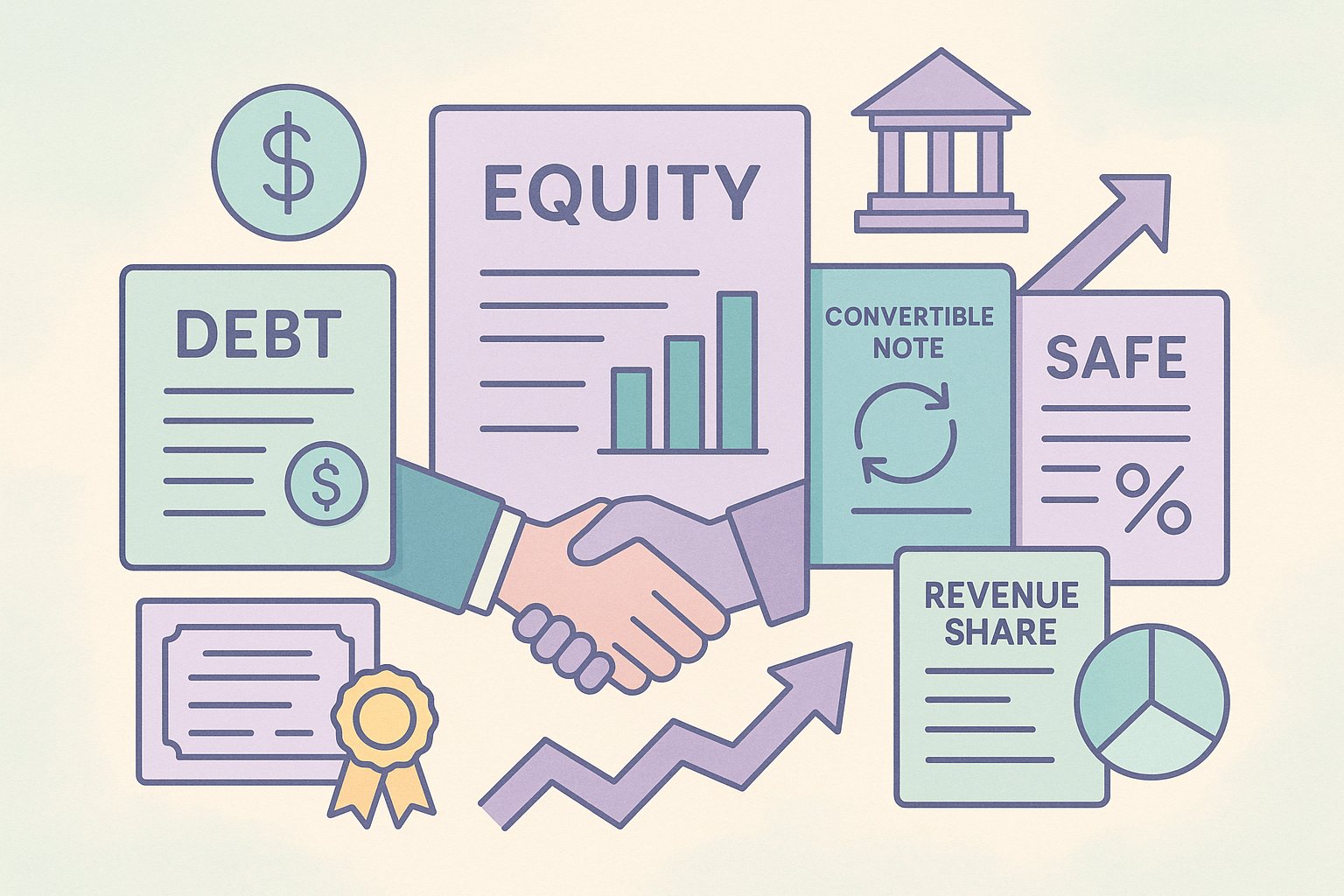Demystifying Crowdfunding Portfolios: A Primer
Crowdfunding has revolutionized the way individuals participate in private market investments, and building a crowdfunding investment portfolio offers beginner investors an exciting opportunity to back innovative startups, social enterprises, and real estate ventures. Unlike traditional public equity, crowdfunding investments allow investors to gain equity stakes, revenue shares, or debt instruments in projects that align with their interests and values. For novices, the world of equity, debt, and reward-based crowdfunding can feel overwhelming—but with a structured approach, clear objectives, and diligent research, you can construct a portfolio that balances risk, diversification, and growth potential. In 2025, crowdfunding platforms have matured significantly: they offer streamlined onboarding, robust due diligence tools, and vibrant investor communities. Understanding the nuances of each crowdfunding model, selecting reputable platforms, defining your investment thesis, and monitoring your holdings are essential steps for any beginner seeking sustainable returns. This guide will walk you through every stage of assembling a crowdfunding investment portfolio, from setting realistic expectations and exploring platform features to managing risk and optimizing for long-term success. By the end, you will have a clear roadmap for navigating the dynamic crowdfunding landscape and confidently deploying your capital in projects that reflect both your financial and personal goals.
Understanding Crowdfunding Models and Structures
Before diving into specific opportunities, it is crucial to understand the three primary crowdfunding models: equity, debt, and reward-based crowdfunding. Equity crowdfunding allows investors to receive ownership shares in a company, positioning you to benefit from appreciation in value or future dividends. Debt crowdfunding, also known as peer-to-peer lending, involves lending money to individuals or businesses in exchange for fixed interest payments and eventual principal repayment. Reward-based crowdfunding offers perks, products, or experiences rather than financial returns, making it less of an investment vehicle and more of a pre-purchase arrangement. Each model carries distinct risk and return profiles. Equity crowdfunding can yield significant upside if a startup succeeds, but it comes with higher failure rates and longer time horizons before exit events occur. Debt crowdfunding provides predictable cash flows but may expose investors to borrower defaults. Reward-based campaigns present low financial risk but do not generate monetary returns. By recognizing these structural differences, beginners can choose the models that best match their risk tolerance, time horizon, and desired level of involvement in the projects they support.
Selecting the Right Crowdfunding Platforms
With a clear grasp of crowdfunding structures, the next step is selecting platforms that align with your investment objectives. Some platforms specialize in early-stage startups across technology, healthcare, and consumer goods, while others focus on real estate projects or small business loans. Key factors to consider include the platform’s track record, regulatory compliance, vetting processes, and fee structure. Established platforms typically conduct background checks on founders, verify financial statements, and impose limits on funding rounds to maintain quality deal flow. In 2025, top-tier platforms also offer enhanced analytics dashboards that display real-time performance metrics, industry benchmarking, and community sentiment scores. Look for platforms that publish transparent investor reports, host virtual pitch events, and maintain active discussion forums where you can interact with founders and fellow backers. Many platforms now facilitate secondary trading of crowdfunded shares, improving liquidity options. By choosing reputable venues with robust investor protections and educational resources, beginners can reduce the likelihood of encountering fraudulent or poorly managed offerings.
Defining Your Investment Objectives
A well-crafted investment thesis provides direction and discipline to your crowdfunding portfolio. Begin by articulating your financial goals: are you targeting high-growth startup equity with the potential for sizable capital gains, or do you prefer more stable income streams through debt-based lending? Establish your time horizon—crowdfunding investments often require multi-year commitments before exit events or principal repayments occur. Determine the amount of capital you can reasonably allocate without jeopardizing your broader financial plan. Reflect on whether you wish to support specific causes or industries, such as sustainable energy, social impact enterprises, or innovative health technologies. Defining clear criteria—target return thresholds, acceptable investment sizes, and concentration limits—helps filter overwhelming deal flow and prevents impulsive decisions based on hype. Document your thesis in writing, revisiting and refining it as you gain experience. A disciplined approach rooted in well-defined objectives will guide you toward opportunities that satisfy both your financial ambitions and personal values.
Conducting Thorough Due Diligence
Due diligence is the cornerstone of prudent investing, and crowdfunding platforms provide a wealth of information to support comprehensive analysis. Start by evaluating the founding team’s credentials: assess their industry experience, track record of execution, and commitment to the venture. Seek evidence of domain expertise, prior entrepreneurial success, or strategic partnerships that can accelerate growth. Examine the business model: how does the startup generate revenue, what is its addressable market size, and how defensible is its competitive position? Review financial projections critically, comparing burn rates, customer acquisition costs, and unit economics against comparable peers. Identify potential regulatory, technological, or market adoption risks and consider how the team plans to mitigate them. Leverage platform-provided scorecards or third-party research reports, but supplement these with independent verification—customer testimonials, patent searches, or interviews with industry experts. While due diligence cannot eliminate all uncertainty, a structured, methodical approach will surface red flags and increase your confidence in the deals you choose to back.
Building a Diversified Portfolio
Diversification remains one of the most effective tools for managing risk, particularly when investing in early-stage ventures or niche real estate projects. Aim to spread your capital across multiple campaigns, industries, geographies, and crowdfunding models to reduce the impact of any single opportunity’s underperformance. For example, combining investments in a fintech startup, a renewable energy platform, and a peer-to-peer business loan can create a more resilient portfolio than concentrating solely on one sector or structure. Beginners should consider allocating no more than a small percentage of their net worth to crowdfunding, then distributing that allocation across at least ten to fifteen distinct investments. As you build experience, adjust your portfolio weightings by evaluating performance trends and emerging market themes. Some platforms offer automated portfolio diversification tools that suggest allocations based on your risk profile and investment thesis. Use these features judiciously, but maintain the final discretion to align your portfolio with your personal convictions and financial objectives.
Managing Risk and Ensuring Liquidity
Crowdfunding investments typically carry greater risk and lower liquidity than publicly traded assets. Illiquidity arises because secondary markets for crowdfunded shares and revenue-sharing notes are still developing, and many offerings impose lock-up periods that restrict early exits. To manage risk, allocate only capital you can afford to lock away for the duration of the project’s lifespan—often three to seven years for equity deals and one to five years for debt deals. Consider setting aside a cash reserve to cover unforeseen expenses, so you are not forced to sell holdings at unfavorable terms. Some platforms now provide periodic liquidity windows or partner with specialized secondary marketplaces to facilitate partial exits. Monitor these opportunities and evaluate the tradeoff between immediate liquidity and long-term return potential. Additionally, maintain a balanced mix of equity and debt investments to smooth out cash flows: interest payments from lending platforms can offset the longer gestation period of startup equity, helping you manage portfolio cash needs more effectively.
Monitoring Performance and Rebalancing
Building your portfolio is only the beginning; diligent monitoring is essential to sustaining performance and capitalizing on new opportunities. Leverage platform dashboards to track key performance indicators such as revenue growth, customer acquisition metrics, loan repayment rates, and governance milestones. Actively engage with founder updates, investor webinars, and community forums to stay informed about strategic pivots, product launches, or regulatory developments. Schedule periodic portfolio reviews—quarterly or semiannually—to assess performance against your original investment objectives. Identify overexposed positions that may require trimming and reallocate proceeds to fresh campaigns that better match your evolving thesis. Rebalancing ensures that no single investment disproportionately influences overall returns and helps capture fresh trends as market conditions shift. While constant tinkering can incur transaction costs and distract from long-term value creation, a disciplined rebalancing cadence maintains alignment with your financial plan and risk tolerance.
Leveraging Technology and Data Analytics
In 2025, technology plays an instrumental role in uncovering and managing crowdfunding investments. Advanced analytics platforms aggregate data from multiple crowdfunding venues, enabling users to compare deal terms, performance statistics, and team backgrounds side by side. Artificial intelligence engines can sift through hundreds of listings daily, scoring each opportunity based on customizable criteria such as runway length, founder experience, and industry growth potential. Automated alerts notify you when new deals meeting your filters appear, or when existing portfolio companies hit milestone events. Integration with personal finance management tools ensures that crowdfunding investments seamlessly fit within your broader asset allocation framework. By leveraging these digital tools, beginners can level the playing field with more seasoned investors, making faster, more informed decisions while maintaining robust oversight of their portfolios.
Embracing Community and Educational Resources
Beyond platform features, the crowdfunding ecosystem thrives on community engagement and shared learning. Joining investor clubs, online forums, or local meetups connects you with peers who can offer insights, share best practices, and provide referrals to promising opportunities. Many platforms host educational webinars, workshops, and pitch days where founders present their vision directly to investors. Attending these events not only broadens your exposure to different types of campaigns but also sharpens your due diligence skills through real-time Q&A sessions. Some investors form informal syndicates or special-purpose vehicles to pool resources and co-invest in larger rounds, benefiting from collective expertise and enhanced negotiating power. By immersing yourself in these collaborative networks, you’ll accelerate your learning curve, forge strategic partnerships, and gain access to off-market or pre-launch deals that rarely appear in public listings.
Planning for Long-Term Growth and Exits
Patience is a hallmark of successful crowdfunding investors. Many equity deals take years to reach liquidity events such as acquisitions or follow-on funding rounds, while debt investments require full term repayments before principal returns. Establish realistic expectations for holding periods and incorporate scheduled check-ins to reassess exit strategies. Some investors pursue dividend recapitalizations or secondary sales when companies generate recurring cash flows, while others opt for strategic buyouts alongside institutional venture partners. Stay informed about secondary market developments: as regulatory clarity improves and trading venues expand, you may gain earlier exit options for equity stakes. For debt portfolios, monitor borrower credit health closely to anticipate potential prepayments or defaults. By blending strategic foresight with disciplined patience, you can harness the full upside of crowdfunding investments and achieve sustainable portfolio growth.
Your Roadmap to Crowdfunding Success
Building a crowdfunding investment portfolio as a beginner may seem daunting, but with methodical planning, diligent research, and active engagement, you can transform your aspirations into tangible outcomes. Start by mastering the fundamentals of crowdfunding models and selecting trustworthy platforms. Define your investment objectives clearly, conduct rigorous due diligence, and diversify across sectors and structures. Manage liquidity constraints proactively and use technology-driven analytics to streamline sourcing and monitoring. Engage with investor communities to tap into collective wisdom and unearth exclusive opportunities. Periodically rebalance your holdings to maintain alignment with your evolving thesis and the dynamic market environment. Above all, nurture patience and discipline—crowdfunding investing rewards those who take the long view and remain steadfast through market cycles. By following this beginner’s guide, you will be well-equipped to navigate the exciting world of crowdfunding and build a portfolio that supports both your financial goals and your desire to back the next generation of innovative projects.




